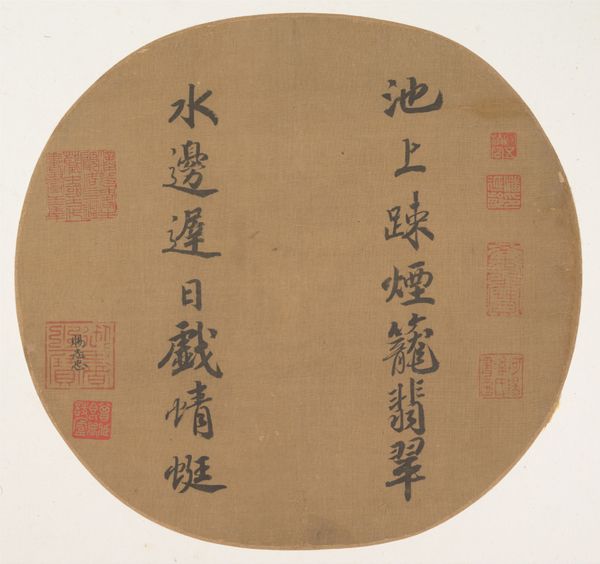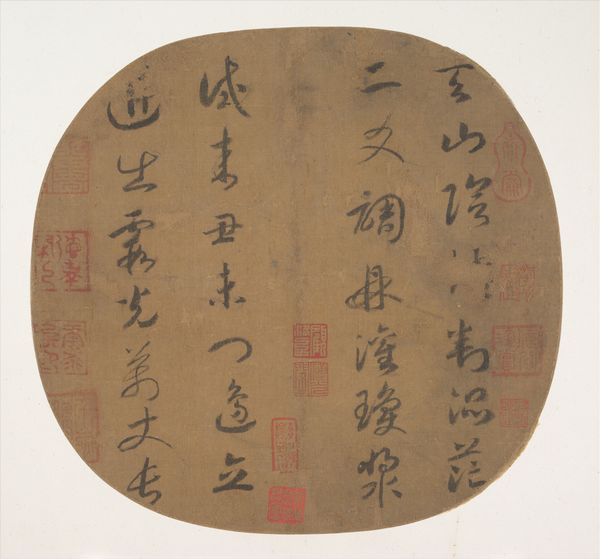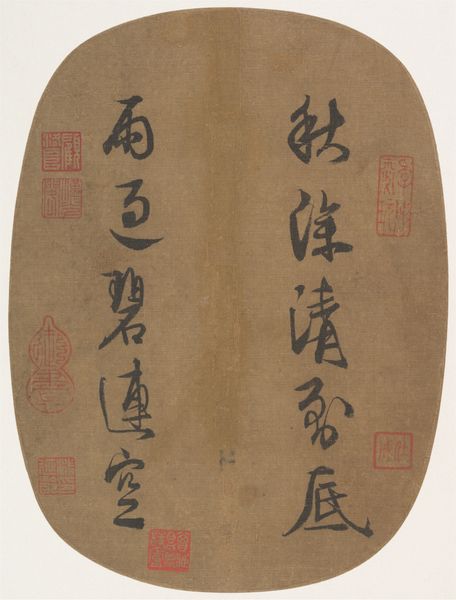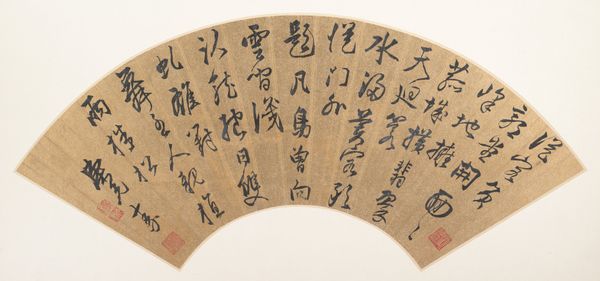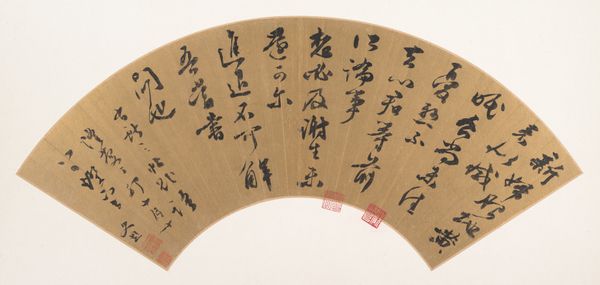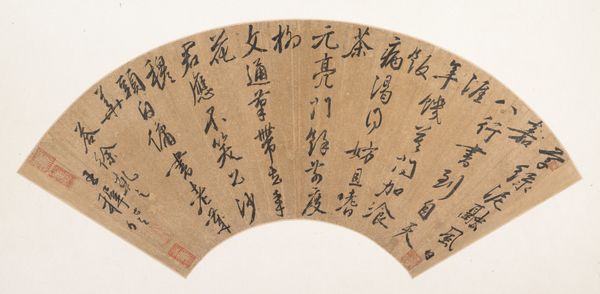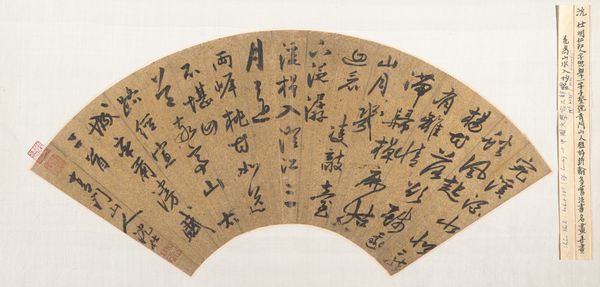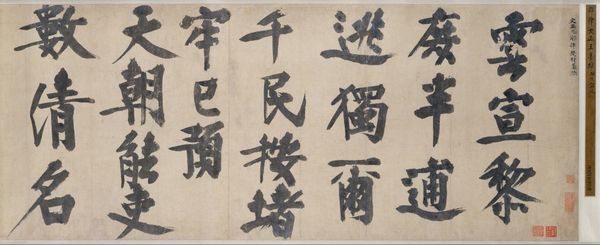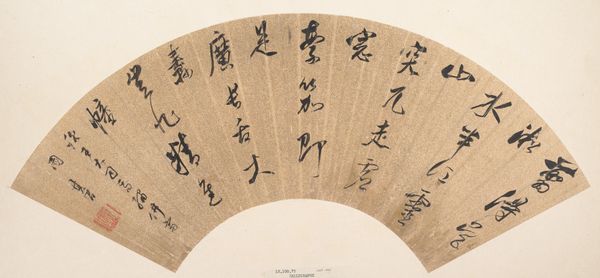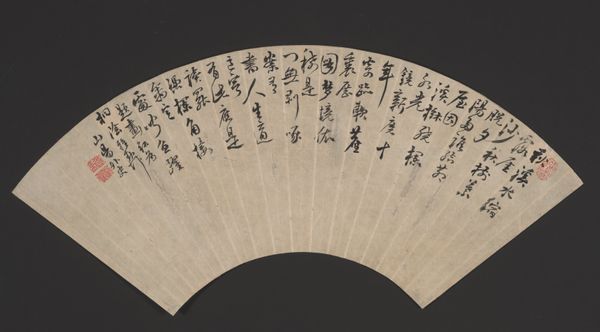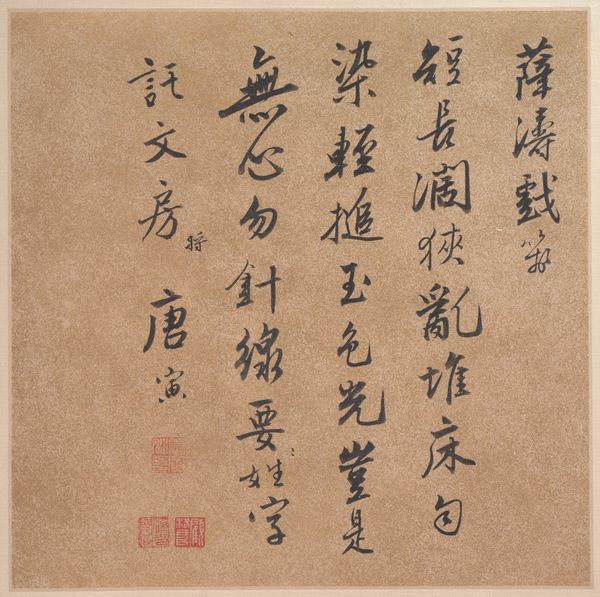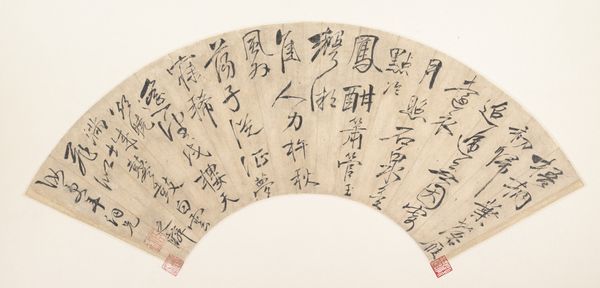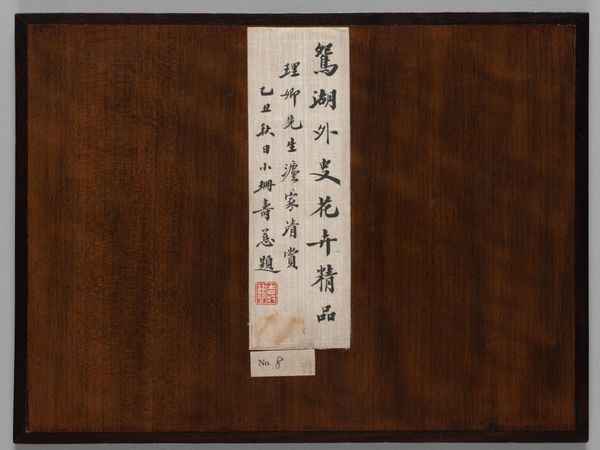
drawing, paper, ink
#
drawing
#
medieval
#
asian-art
#
paper
#
ink
#
watercolor
#
calligraphy
Dimensions: 8 3/16 x 8 11/16 in. (20.8 x 22.1 cm)
Copyright: Public Domain
Editor: Here we have "Couplet from a Poem by Han Hong," created around 1261. It's an ink drawing on paper attributed to Emperor Lizong. The round shape and the delicate strokes give it such a serene feel. What’s your interpretation of it? Curator: I'm particularly interested in the materiality of this piece. Think about the production of this paper in 13th century China; it wasn’t just a readily available surface, but an object resulting from considerable labor and specific knowledge. The ink, too – how was it produced and traded? These aren't just neutral materials. Editor: So, you see the process of creation itself as central to understanding the art? Curator: Absolutely. This piece encourages us to consider the socio-economic context of its production. The ink, the paper, the very act of calligraphy – these are not isolated acts of artistic expression. What does calligraphy communicate in terms of value of artisanal activity and elite training during this historical moment? How the meaning of art objects is contingent on social factors. Editor: I see what you mean. It shifts the focus from pure aesthetics to the hands and processes that brought it into being. How do the material considerations play a role in understanding the meaning? Curator: Think about the texture of the paper, its absorbency affecting the ink's flow. The type of brush used and its flexibility dictate line thickness, creating hierarchy and emotional undertones. Material choices affect visual results – influencing reception and interpretation within a very specific cultural system. These material concerns were likely extremely calculated. Editor: That gives me a whole new perspective! I was so focused on the visual harmony. Curator: It’s about looking beyond that and acknowledging the tangible realities behind artistic creation, which often get overlooked. By examining materiality and the labor invested, we unpack the historical, social, and economic systems at play. It reshapes our appreciation. Editor: I’ll definitely remember to consider the 'how' and 'why' of materials in future art analyses. Thanks!
Comments
No comments
Be the first to comment and join the conversation on the ultimate creative platform.
